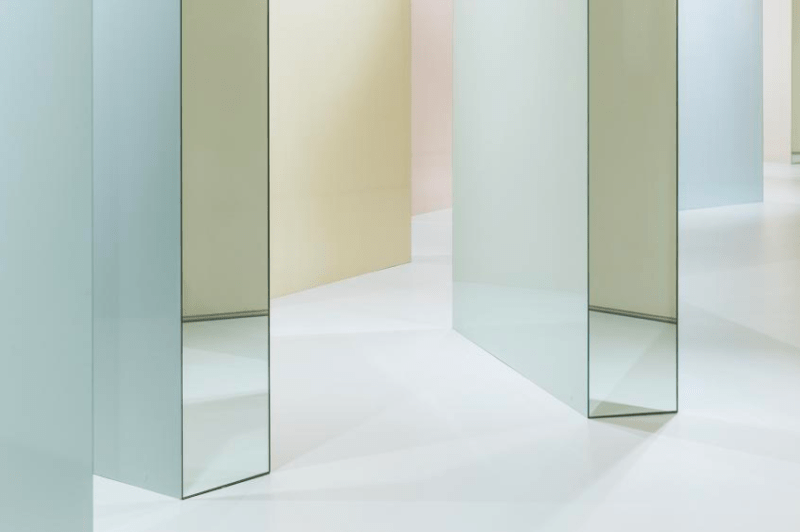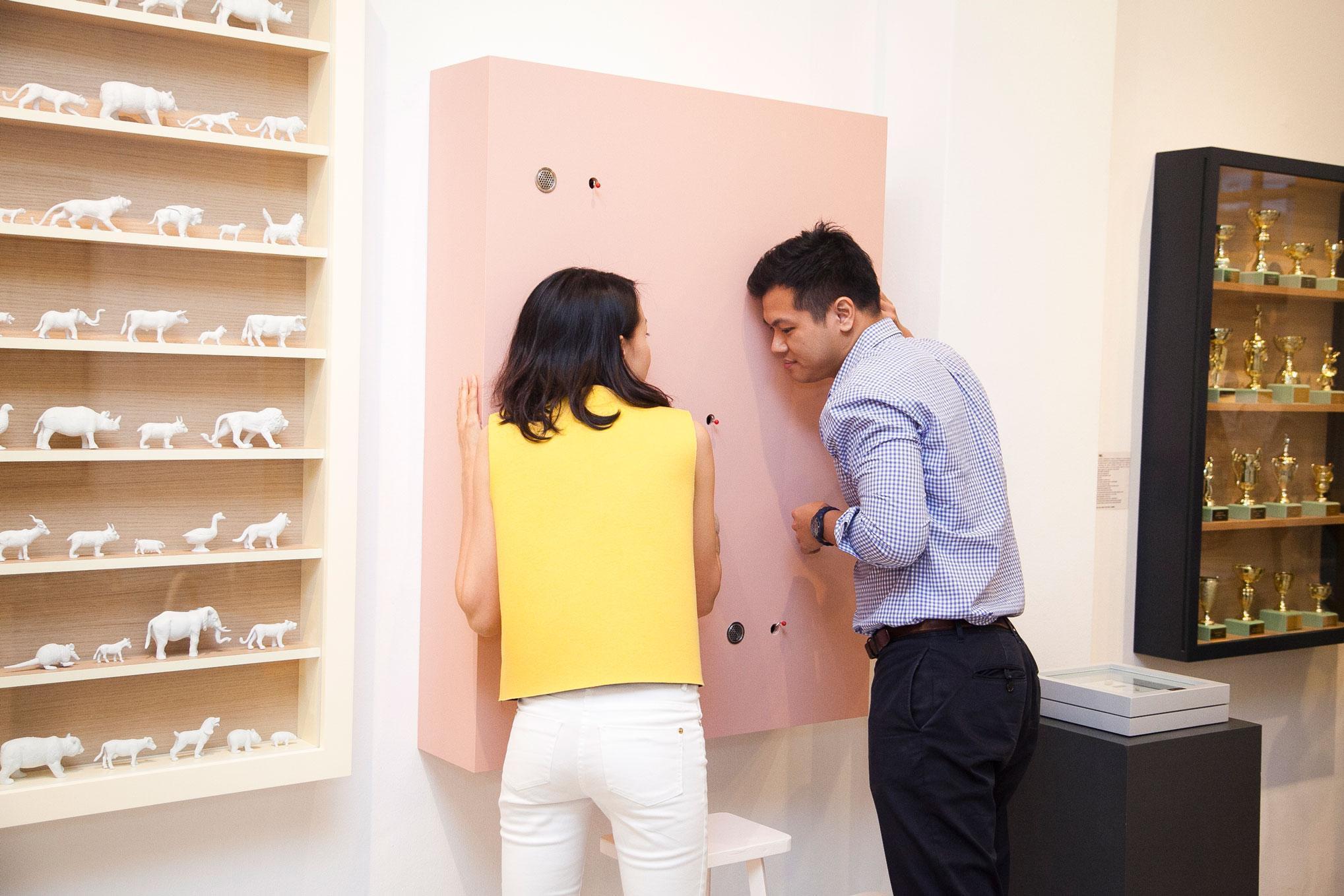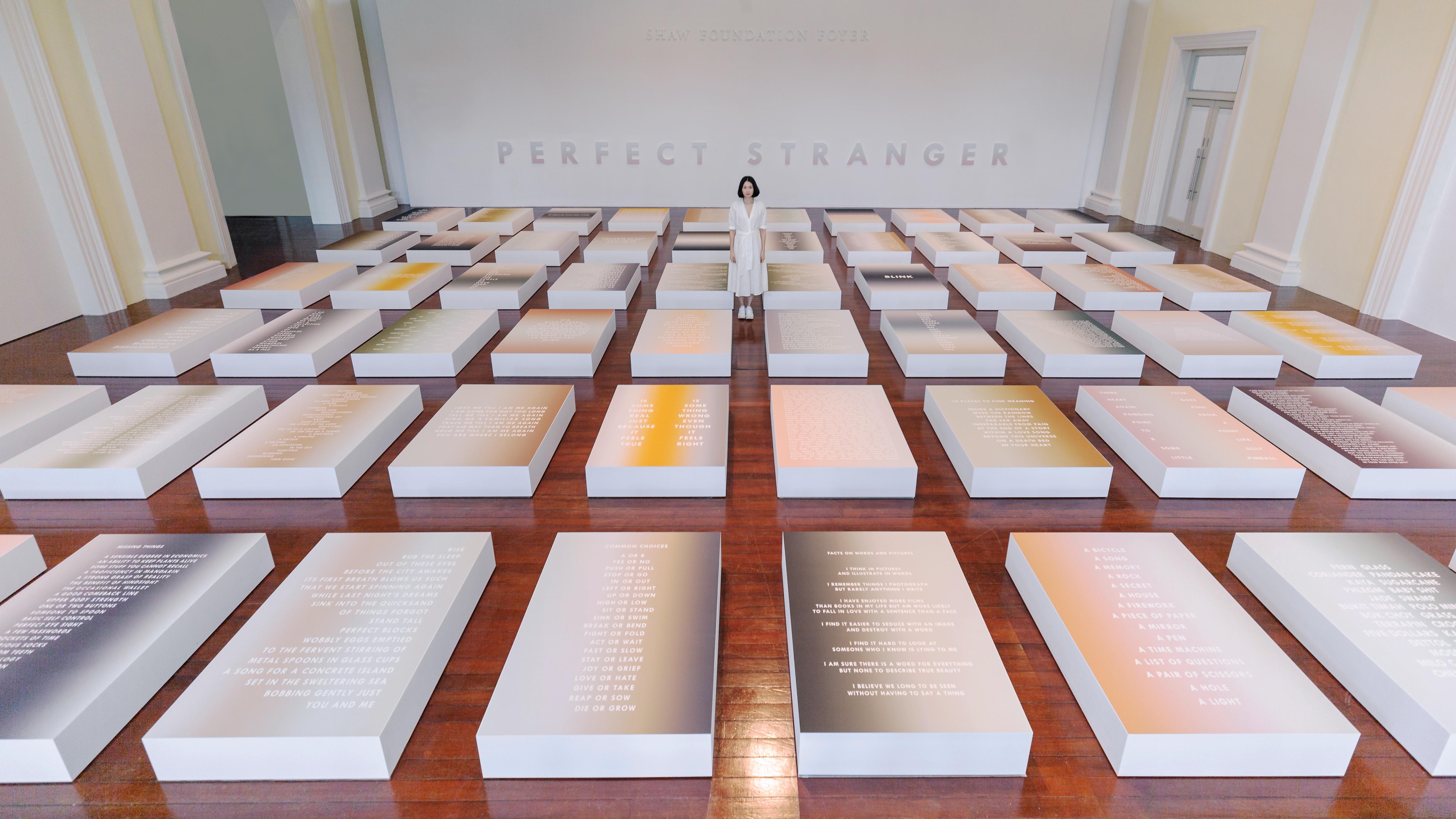23 May 2016
Pastel Prisms:
Dawn Ng’s Free-ranging installation at Hermès aloft space

WRITER: DAVEN WU
When Singaporean curator Emi Eu approached compatriot Dawn Ng to create an installation to inaugurate Hermès’s refurbished flagship store, the visual artist barely hesitated. For one thing, it’s not everyday that the sixth-generation marque comes knocking. And for another, the site – Aloft at Hermès – is both a brand new, fourth-floor column-less exhibition space that is one of just five Fondation d’entreprise Hermès art spaces in the world, and the perfect blank canvas for Ng’s expansive, free-ranging installations.
‘When Emi approached me with the Hermès commission, she spoke of new perspectives and horizons,’ Ng recalls. ‘I thought about newness in the context of the world we live in today, which tends to shout or blare, to rise above the visual or social noise around us and create a big bang. I wanted to take the work in the opposite direction to a place that was soft, naive and innocent.’
The result is all that and more. Anchored by large pastel-hued plaster and wood blocks whose ends are lined with slender slabs of mirrors, the all-white room engenders an immediate sensation of quiet stillness. The random placement of the blocks creates physical gullies that coax visitors to flow in and out of spaces, their presence reflected in fleeting, disembodied mirrored glimpses. The concept is disarming in its simplicity and unexpectedly moving in the experience.
Ng says the abstract colour planes – an idea that owes much to the French post-war artist Yves Klein – represent different portals, and their symbolic and psychological ability to usher people from one place, time, or self, to the next, so that they disappear and re-emerge again.
‘I felt this softness and purity was much more powerful and startling when transformed into a surreal environment for someone to be immersed in,’ she says. ‘I wanted to create an abstract sense of moving through the soft pastel colour planes of an early horizon – that child-like, ephemeral place between sleep and consciousness, that gentle awakening to a new beginning.’

The space is a new fourth-floor, column-less exhibition hall that is one of just five Fondation d’entreprise Hermès art spaces in the world, and the perfect blank canvas for Ng’s expansive, free-ranging installations

Anchored by large pastel-hued plaster and wood blocks whose ends are lined with slender slabs of mirrors, the all-white room engenders an immediate sensation of quiet stillness
The random placement of the blocks creates physical gullies that coax visitors to flow in and out of spaces, their presence reflected in disembodied mirrored glimpses

At the center of Burt’s practice is the visualisation of language and fictions (often related to women) through material constructs. In this instance, O Dear What Can The Matter Be takes The Yellow Wallpaper (published in 1892) by the American feminist novelist Charlotte Perkins Gilman as its point of literary inspiration, and it is from this story of forced bed rest for a woman suffering from depression, and the resulting psychosis that ensues from this ill-prescribed isolation, that the installation comes to form. Three bright pink metal poles provide support for roughly hung chicken wire that together stake out a suggestive room. Spilling out of the edges and tumbling down from the ceiling, wood, brick, and metal dance with coloured threads, delicate lace and loose fabric, these elements simultaneously supporting, defining, pulling, restricting and crushing one another. As one walks around the installation, elements that appear in one instance to support one another, equally reveal that they are aiding mutual collapse. The work is encased within a gallery environment that is painted a thick, shiny, egg-yoke yellow whose brightness initially welcomes, but soon revolts. Together the viewer and the work are trapped in a conversation of tension and uncertainty, the angst-ridden language and subject of the book transferring to the physicality of the installation, which in turn transfers to the psychology and personal recollection of the viewer—anxiety mediated, but undiluted and shared.
Ng’s practice on the other hand, is known for its ability to engender childlike wonder in the viewer and to tap into a poetic nostalgia for the unconstrained curiosity that comes with it. On entering How to Disappear into a Rainbow, the viewer is greeted by large blocks with sides that alternate between sleek, shiny, soft pastel hues and those that are mirrored. The blocks are of different sizes and placed irregularly throughout the space, so that as you walk you slip through a maze of light refraction and fractured self-reflection until you literally become part of the fabric of the work itself. While the materials are hard, the visuals are soft, and as the space is navigated the ethereal nature of the experience encourages the mind and, more specifically, memory to recall personal moments of untrammeled adventure, amazement and the sense of being part of the environment rather than bound by it.
Ng (pictured) explains, ‘I wanted to create an abstract sense of moving through the soft pastel colour planes of an early horizon – that child-like, ephemeral place between sleep and consciousness, that gentle awakening to a new beginning’
FURTHER READING

